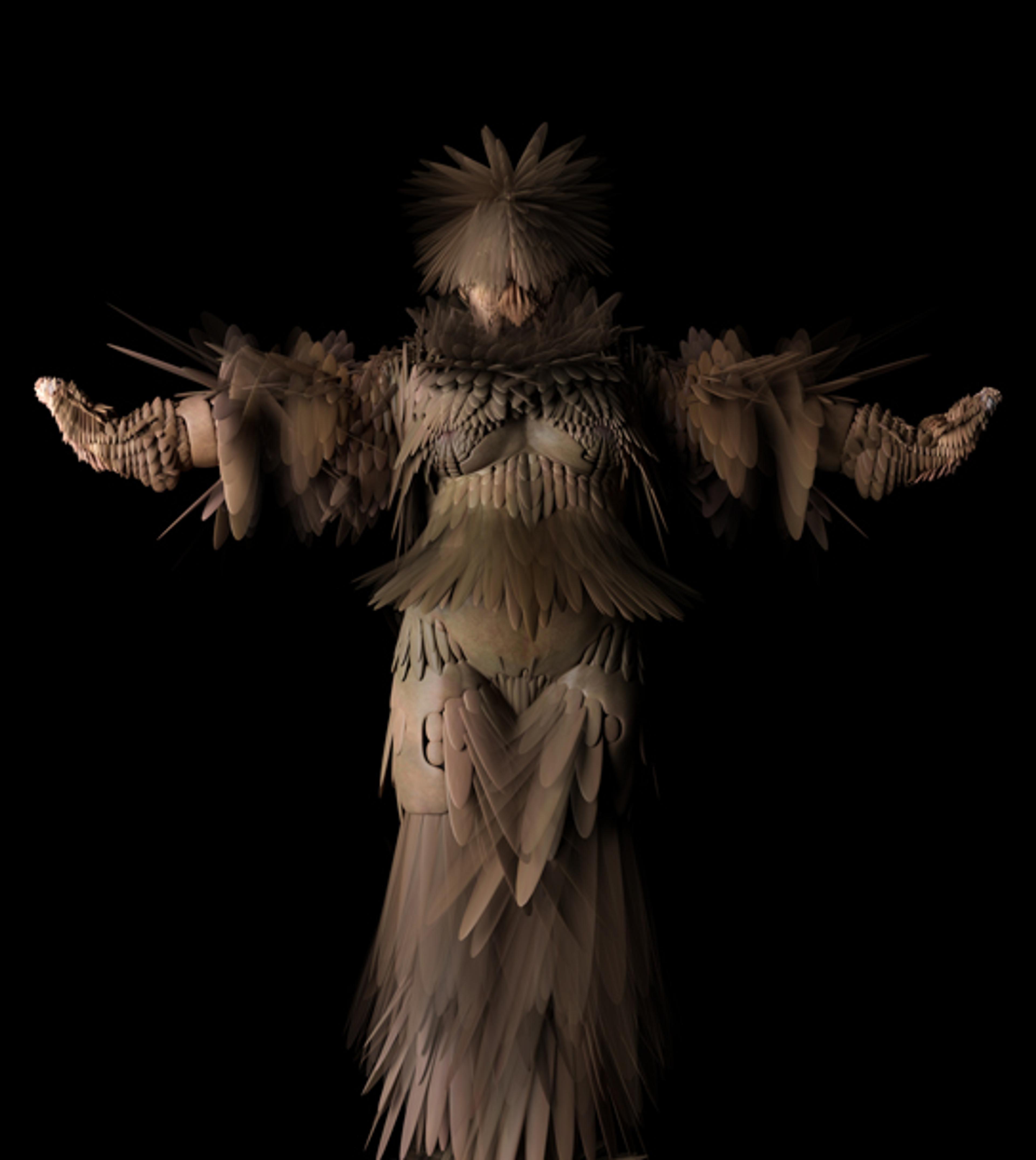Tobias Gremmler
The Changing Room
Humans are the only animals who can’t grow a second skin. Instead, we obtain the essential qualities of protection, warmth and expression by producing clothing that replaces fur, feathers, shell or armor.
In this exhibition, the close connection between garment and body is explored — both in a physical and psychological manner. While the inner surface of a garment touches the skin in the most intimate way, the outer surface represents, defines, or extends the wearer’s personality.


The advantage of our clothing is the ability to adapt it to various circumstances. Not only relating to social and practical aspects, but we can also change our “second skin” frequently, and use it as an important tool for our well-being and interaction. The disadvantages of clothing are ecological issues related to the manufacturing process and disposal of used garments. Unlike fur, garments don’t grow on the host’s skin and are often excluded from the natural recycling path of organic materials.
In his scenographic media exhibition, visual artist Tobias Gremmler takes us on a mind-blowing journey to picture a world where garments can actually grow on human skin. In a constantly changing room, he opens up a space dedicated to the endless possibilities of innovation.
Imagine a human fur created through covering body parts with lotions, or swallowing a pill. Or a fabric that is created from the biomass and energy of the host, attached directly to the body and ready to be peeled off or changed at desired intervals. Or a genetic code that has been adapted, enabling the human body to become an integrated part of the biological ecosystem. In this world, each of these second skins becomes something we have cared for, and its past and future becomes of importance to us.
The inherent quality of fabric, its flexibility and dynamic nature, extends the motion of the body. As the body affects the movement of the cloth, the cloth reflects the movement of the body. The center of mass shifts from human to cloth, which sensitively responds to external forces such as wind turbulence.
“Att komma in i The Changing Room är att vandra rakt in i det innovativas arkitektur...”
“”